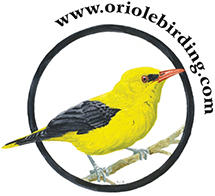Weekly round-up: 22 - 28 May 2013
This was another week where it was a mixed bag of birds and a mixed bag of weather too. Generally the airflow was from, first, the north or northwest before switching to the northeast and east.
Temperatures were initially well below the seasonal average, but a sunny (for many) Bank Holiday Weekend lifted things to beyond the seasonal norm, some places edging in to the low 20’s degrees C.
Birdwise? Well, it was a little bit like the weather ~ a bit up and down, often feeling like pretty hard work unless you were seawatching on the Hebrides or looking for waifs and strays anywhere north of The Wash.
The biggest news of the week concerned a belated US arrival in north Wales and another American visitor in a private garden in Lincolnshire. Hopefully, it’ll be better luck next time…
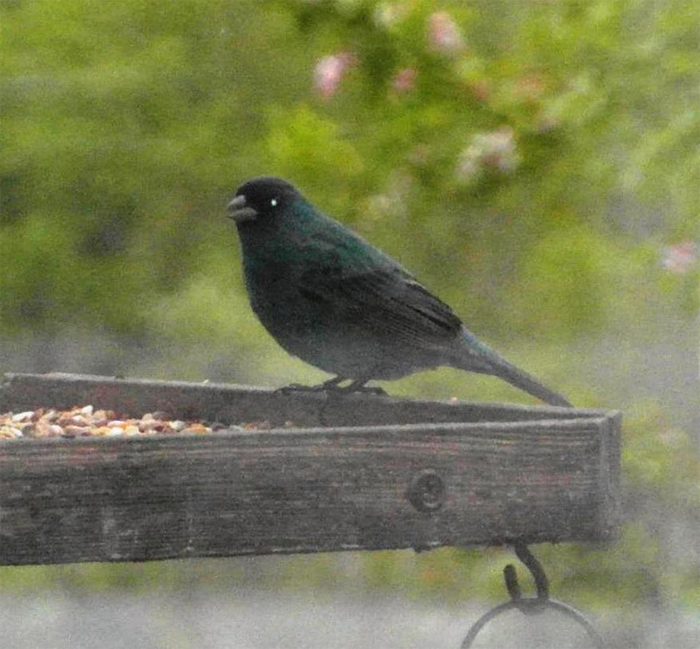
After all the mayhem and excitement of last week’s Dusky Thrush (it really is still sinking in….) events this week were always going to struggle to follow all that Thrushy fun and frolics.
In actual fact, what could, arguably, have been the next biggest bird of the spring had already “done a runner” before anyone knew about it.
Just a couple of days after the Dusky Thrush had departed, what had the potential to have been another big-turn-out-bird, a presumed male Indigo Bunting paid an hour-long evening visit to a feeder in gardens near Llansadwrn, on Anglesey on 20th. Despite further searches in the area at the end of the last review period, there was no further sign of the handsome-looking potential mega ~ although after the first belated report came a second, for the previous day (19th) at Moelfre, some seven or eight miles to the north.
Another one slips through the net then….?
It seems that there is just one image of the bird ~ certainly there’s only one online at the moment, and it does appear to portray something resembling a male Indigo Bunting, though it is hard to be precise in the plumage detail given the record shot shown.
The bird does seem to have dark in all the right places, although the head looks a little too dark for some tastes. The bill looks a little fulsome and bulbous for an Indigo Bunting, but is presumably just the angle that the bird is holding the head whilst feeding. And the evening light and lo-fi quality of the image (don’t knock it, any image is better than no image) don’t really portray a vivid blue bird, more of a deep, dark greenish-turquoise ~ although in life it was noted as being a “bright blue finch”. Job done then.
So, let’s go with it being an Indigo Bunting ~ there are now a few more hoops to go through before we get anywhere with it…
Assuming it isn’t a cage bird, how did it get here?
Indigo Bunting is a proven long-haul migrant in North America, trawling down through to Central America and the Caribbean and on to their wintering grounds in northern South America. We know they can get to Britain and Ireland under their own steam ~ there’s one accepted record for both and another, famously contentious, record too ~ so, generally, that works in favour for this bird.
The location is fine, the weather around the time of arrival was more than ok for an American vagrants spring passage and the time of year won’t hold it back either ~ the second British Lark Sparrow was found on the east coast, at Waxham, in the middle of May in 1991. Our one and only Fox Sparrow arrived on Copeland island in early June 1961, there are three May Song Sparrow records (from East Yorkshire, Gwynedd and the Isle of Man), a remarkable four White-crowned Sparrows (two in 1977, on Fair Isle and in East Yorkshire, with others following in County Cork in 2003 and Fife in 2008 ~ which may well have been the Cley wintering bird) and a whopping 21 May White-throated Sparrows.
Add in another amazingly high 22 Slate-coloured Juncos, a single Rose-breasted Grosbeak (the suppressed bird at Holme in May 2006) and two May Brown-headed Cowbirds and the list of non-warbler chunky Nearctic passerine sparrowy, buntingy and finchy type of things becomes really impressive.
Assuming it is an Indigo Bunting it then falls to the BBRC to muse on whether it is a bird that has made it here by fair means (relocating after an autumn Western P arrival or maybe even cadging a lift on a boat and hopping off a little earlier than the usual spot at Seaforth) or by foul (the dreaded “out of the lock-up” scenario).
The first truly outstanding British claim of Indigo Bunting, a moulting adult male in Wells Woods from October 21st-30th 1988, went through the ringer any number of times before being famously deemed “not worthy”.
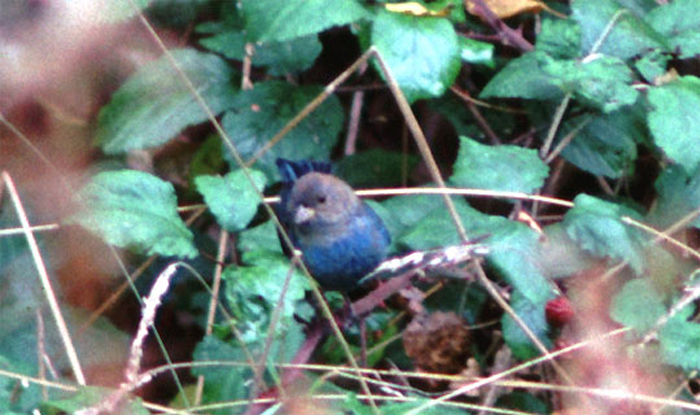
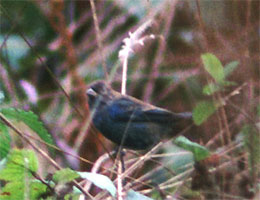
(© Neil Morris - www.tarsiger.co.uk)
The bird’s appearance (in both senses) attracted a lot of attention at the time with origin, age and, particularly, a much discussed, much debated, “abnormal” moult being the prime topics of conversation ~ the bird was showing a lot of blue within the overall plumage which, it was suggested, was supposed to be far from correct for a wild bird and more akin to the appearance of a cage bird. That point was argued ‘til the cows came home, but it proved to be the key issue in the bird earning a place in Category D, rather than Category A.
That the bird’s arrival in Norfolk coincided with two more outrageous US arrivals on the east coast, a Cliff Swallow in Cleveland and a Northern Waterthrush in Lincolnshire (all three species appearing between October 21st-23rd) counted for nothing (whilst the Dutch clocked up a Northern Mockingbird at the same time).
Curiously, the location of the Wells bird has this week been quoted as being “far from ideal” which is, as any student of rareology will know, is a curious thing to say. Norfolk’s track record for scoring big with Nearctic passerines is well established….Red-breasted Nuthatch 12 months on from the Bunting, in the same (very long) pine belt would be your basic starter for 10….
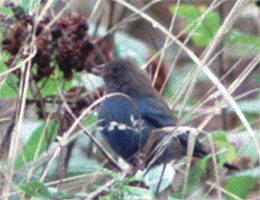
(© Neil Morris - www.tarsiger.co.uk)
However “incorrect” the bird’s appearance may have been (compared to recent WP vagrants say), there is clearly a wide degree of variability with males of the species (not unlike the variability with last week’s Kentish mega).
The longer the Wells bird stays in Category D, the less-likely it is to ever see the chance of promotion ~ but if someone urged the BOURC enough for a review, well, it could get a much-deserved second chance….especially if more comment from US banders comes up with new thoughts on the state of the Wells bird (and despite my stout case for the defence, no, I didn’t see it…).
The first Indigo Bunting to get the green light was an 11 day bird on Cape Clear Island (Co. Cork) in the classic American autumn of 1985, while the first (and only) accepted British record remains the twitched first-winter male on Ramsey Island, off the coast of Pembrokeshire from October 18th-26th 1996.
Hands up who enjoyed that murky, misty, foggy and very wet Sunday when the boats and zodiacs finally headed out in to Welsh water? How much relief was there when the bird performed so well too?!?!?
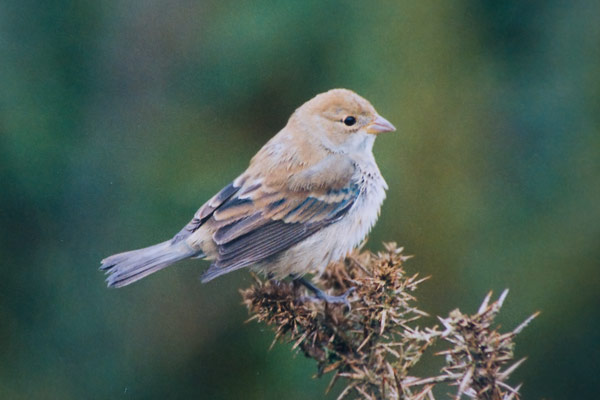
And, funnily enough, just four days before the Ramsey Indigo Bunting arrived, there was another Northern Waterthrush on offer, the showy bird at Portland Bill, and there was also a Cliff Swallow too ~ seen on October 1st at Church Norton. Crivens….
Funnily enough one of the species mentioned earlier, White-throated Sparrow made its 22nd May appearance on 28th with news of one in a private garden in Spalding (Lincolnshire). There’s very little information to hand to be honest, some suggested the inevitable invite-only carry-on but no one is really any the wiser as to what’s been going on.
If accepted (there are photos…), this will become the third record for the county, following on from a two-day bird in Fulbeck in June 2010 and the wintering bird at Willingham Woods, present from December 1992 to March 1993.
Nothing contentious about the third star bird of the week ~ the 24th seeing the surprise re-appearance of the young drake Harlequin, back again at Traigh Iar, on the Balranald RSPB reserve after almost a full calendar month away from the site.
Appearing on February 18th, this super-handsome duck spent 66 days onsite, proving to be a particularly popular bird during a sometime fallow rarity period until the last sighting on April 25th. Now he’s back (for how long?) and the question as to “where has he been?” remains an intriguing mystery. He was still in place on 27th but there was negative news on 28th.
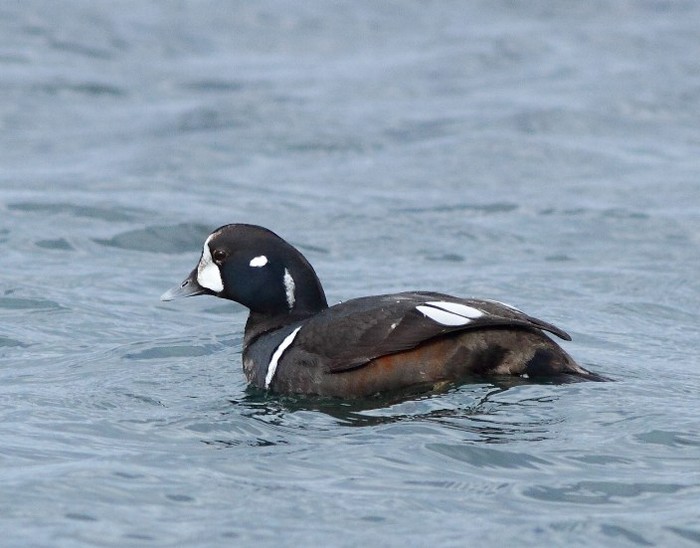
Next up, a species that makes a debut appearance within the Headline Birds section, but is more than worthy of an in-depth look. The past couple of weeks have seen a very, very impressive push of Long-tailed Skuas through, mainly, the Outer Hebrides and the last review concluded with a figure in the low to mid 100’s for the days on 20th-21st (including a late shout of around 150 over Noup Head, Westray on Orkney on 21st) but these were just the merest hint of what was to follow as the new review period began….
Undoubtedly one of the most eye-catching pager messages for weeks and weeks related to the incredible figures concerning Long-tailed Skuas off Aird an Runair, near Balranald RSPB on North Uist during a spell of just under two and a half hours during the late afternoon of 22nd ~ a massive 1,125 seen between 3.55pm and 6.15pm, with reports of several hundreds prior to these.
Within the afternoon tally were reports of vast flocks of skuas ~ one online post notes flocks of 460, 255 and 189…numbers which almost beggar belief but which are also completely mind-blowing!
Elsewhere around the Outer Hebrides, 350 were seen from Mangersta, Lewis and 105 were seen at the start and end of the day at Ardvule, South Uist while on the Scottish mainland, 77 birds seen in Ayrshire included 55 heading over Saltcoats. Even allowing for some duplication (but with perhaps several hundred missing from the Hebs tallies) and the addition of nine birds in Cumbria, the grand total of birds on the day was a scintillating 1708.
…and that total was beaten the following day (23rd) as the remarkable, record-breaking movement continued, with the emphasis shifting (along with the wind) as the Hebrides passage dried up while 100’s of Long-tails were channelled through the beautiful landscape around The Corran Narrows, near Fort William (Highland).
Initially around 150 birds were seen through to the afternoon there, but as the afternoon rolled in to the early evening, numbers stepped up a gear (or two) and by 6.50pm, at least 834 birds had been counted. Twenty minutes later, the Loch Linnie site saw a group of c.250 push on through ~ perhaps continuing, overland, onwards towards Inverness and then out to sea….
/long_tailed_flock_may22crop1.jpg)
During the morning of 23rd, 29 Long-tailed Skuas were seen in a flock over Inverness while another 67 headed over Eigg. Elsewhere around the Highland region flocks of 18, 14 and 23 were recorded, along with a handful of single figures too. Elsewhere on the Scottish mainland, 25 were seen over Loch of Skene (Aberdeenshire) and in Argyll & Bute, 32 were noted at Crinan.
On Lewis, at Mangersta, 242 birds were seen, with only eight more reported (from North and South Uist combined), while on Orkney, a flock of 46 flew over Brough of Birsay, Mainland (and 12 over Marwick), while at least 45 were noted heading over North Ronaldsay. On Shetland, four Long-tails were seen at Tingwall.
The total, just for Scotland, came to 1,726 birds (minimum) with a further 20 recorded in England and Wales. A flock of eight flew over Hartlepool Headland (Cleveland) at 6.10pm, appearing over Seaton Sluice (Northumberland) three-quarters of an hour later. Five birds were seen off Jenny Brown’s Point (Lancashire) and there were singles for Filey (North Yorkshire) and Whitburn (Co. Durham). In Wales, two birds were noted off South Stack RSPB (Anglesey) and three flew offshore from Kenfig Pool (Glamorgan).
/long_tailed_skua_13Nuistcrop.jpg)
By 24th, the passage in Scotland had slowed down considerably, with up to 94 reported from six different counties/areas of the country, including 44 from a couple of different Isle of Skye ferries and another 24 for Saltcoats. At least nine were seen in the morning from Girdle Ness (Aberdeenshire) too.
Further to the south, six birds flew past South Stack RSPB with another making all the way down to Queen Mother Reservoir (Berkshire) while on the English east coast, a minimum 29 were seen from East Yorkshire to Northumberland including six each for Spurn and Newbiggin, four of St. Mary’s Island and three from Whitburn.
Balranald popped in another 66 birds on 25th, with a further four to six the following day while singles at Seafield (Dumfries & Galloway) and Baleshare (North Uist) rounded off the proceedings.
There is little doubt that adult Long-tailed Skua is a bird that is the epitome of airborne grace, poise, elegance and beauty and it is a delight to see them feature so prominently this week….
Sneaking in to the headline acts this week, Hampshire’s first Roller in 16 years (almost to the day) arrived on Broxhead Common on 23rd, before making itself public on 25th.
There have been eight records now in the county ~ the last was on May 25th 1997 at a secret location in the New Forest and prior to that, the next most recent record was of a well-watched bird, also in the New Forest, at Rowbarrow Pond, on May 30th-31st 1987. Two post-war birds came next (in 1955 and 1947) with historic records coming in 1918, 1904 and the first, in 1881.
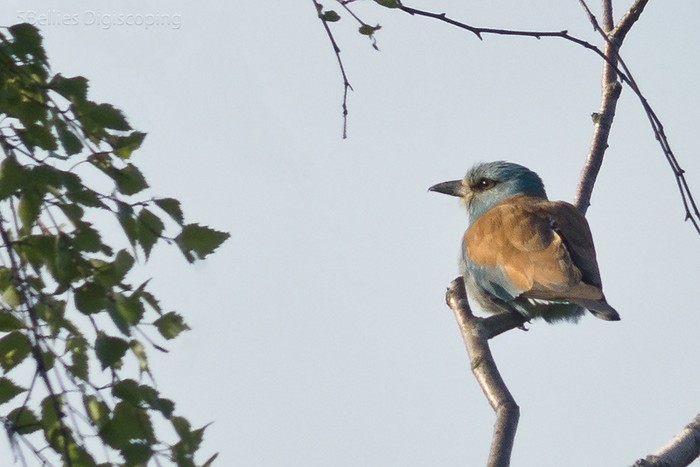
Despite there being over 330 accepted records, Roller went through a little bit of a tough-to-connect-with spell at the start of the 2000’s ~ no records between May 10th 2001 and June 11th 2005, but 15 or so since (including several much-admired individuals, things appear to be back on track for this multi-coloured wonder.
The Hampshire bird remained until just after 9am on 26th and then popped up six and a half miles away, over the border in Surrey ~ spending a brief moment or two on Thursley Common before pottering off to the northeast, becoming only the fifth record for the county in to the bargain ~ and the first in Surrey since one in May 1978.
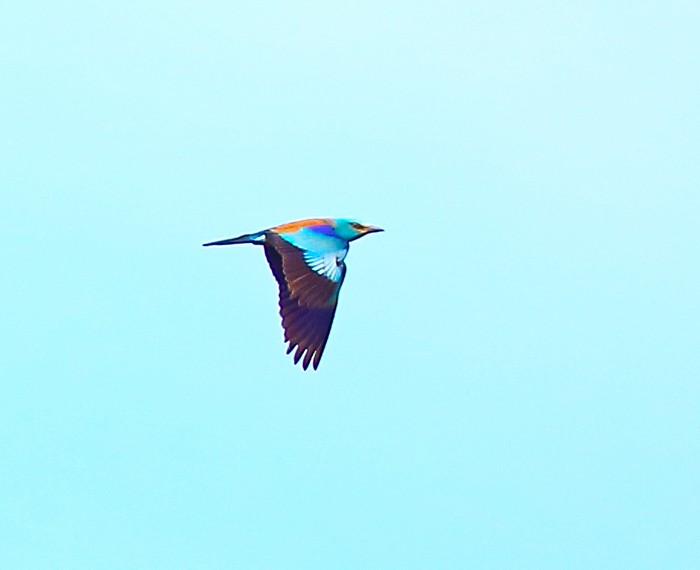
Away from all that amazing skua action, the windy weather up north saw a probable summer plumaged Grey Phalarope fly past Saltcoasts (Ayrshire) on 23rd and a first-summer Sabine’s Gull was noted headed west past Lavernock Point (Glamorgan) on 24th with an adult off Bloody Foreland (Co. Donegal) on 25th.
The week’s only Leach’s Storm-petrel was noted off Whitburn (Co. Durham) on 24th and a Little Auk flew by North Ronaldsay (Orkney) on 23rd while, most noteworthy of all, was Spurn’s Great Shearwater, seen heading north on the morning of 24th, on what the Observatory website says was the best-ever spring seawatch for the site.
By the end of the weekend, a total of 322 Pomarine Skuas had been recorded, with Aird an Runair faring bets once again ~ with 50 on 22nd and 41 on 26th. On Lewis, at Mangersta, 50 Poms were seen on 23rd and on South Uist, on 22nd, 25 were reported from Ardvule. Another 25 were seen over Eigg (Highland) on 23rd. A further 11 were noted to the end of the week, including four singles in the far southwest, two for Devon and two for Cornwall.
Meanwhile, off the coast of County Galway, on Inishbofin, the White-billed Diver lingered until 23rd at least.
It is rather tempting to link the Black Stork seen over Horstead Keynes (West Sussex) on 25th with the individual seen in Hampshire last week ~ these striking birds can be surprisingly hard to see unless they are soaring on a thermal….another was found on Mull on 26th.
After last week’s report of an immature Night Heron at Cley, one (the same one?) was reported heading west over Kelling Heath during the late afternoon of 26th. It too was aged only as an “immature”. In Cornwall, at Marazion Marsh RSPB, the first-summer Purple Heron remained to 25th (and was seen the following day at nearby St. Erth) with further singles at Kenfig NNR (Glamorgan) on 22nd and Slimbridge WWT (Gloucestershire) on 25th.
Three Great White Egrets were noted at Shapwick Heath NNR (Somerset) on 22nd-23rd and also at the start of the new review period, a single bird was seen at Manby (Lincolnshire), present to 24th.
On 23rd, single Great White Egrets were at Howick (Northumberland) ~ presumably the same bird seen in the last couple of weeks in the county ~ and at Lound (Nottinghamshire), while on 25th, lone birds were seen near Harrow, at Rayner’s Lane and in Gwent, at Sudbrook. Another Welsh bird followed on 26th, at the National Wetlands Centre (Carmarthenshire), one was on the Isle of Wight, at Brading, also on 26th and another was at Blue House Farm EWT (Essex) on 27th. The week drew to a close with what could be the bird from Northumberland was at Seaton Common and Long Drag (Cleveland) on 27th, but then two were noted in the general area on 28th, with a single bird in Devon, on Exminster Marshes.
In Kent, single Cattle Egrets remained at Northward Hill RSPB to 22nd and Dungeness to 24th while the bird in Ireland, at Hillsborough Park Lake (Co. Down) was still present on 26th.
The second-summer Glossy Ibis was at Marloes Mere all week and another was reported from the reedbeds at Dervaig, southwest of Tobermory, on Mull (Argyll & Bute) on 26th.
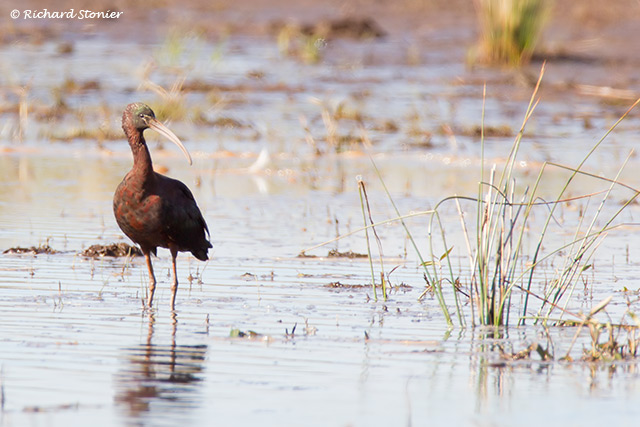
The number of Spoonbills reported fell by almost half compared to last week ~ only 27 or so noted countrywide over the last seven days. Up to five remained at Minsmere RSPB while along the north Norfolk coast, up to seven birds were noted, including three for Cley on 26th, with two more at Titchwell and another duo on the saltings at Warham.
Three headed over Beacon Ponds (East Yorkshire) on 27th and there were two birds each for Middlebere and Christchurch Harbour (Dorset) and there were also two at Druridge Bay (Northumberland) on 26th. Further east coast single Spoonbills were noted at Frampton Marsh RSPB (Lincolnshire), Kilnsea (East Yorkshire) and Filey Dams (North Yorkshire) across the weekend of 25th-26th while one remained at several sites in South Yorkshire to 28th and singles was noted in Northumberland and Hampshire on the same date, and Aberdeenshire, Forth and Lincolnshire on 28th. The final bird of the week was at the National Wetlands Centre on 25th-28th.
A Common Crane arrived at Haroldswick, Unst (Shetland) on 24th and was still there to the end of the week. Another single flew over near Stokesley (North Yorkshire) on 25th when two birds were seen on the Ouse Washes (Cambridgeshire). Earlier in the week, on 23rd, two Cranes were at Castle Marsh SWT, Barnby (Suffolk) and mass of visitors to Lakenheath RSPB also clocked one or two there as well throughout the week.

The intriguing Small Canada Goose remained at Loch a’Roe, near Aird an Runair on North Uist until 26th at least. In north Norfolk, a curious cameo was to be had by the impressive white Snow Goose which was seen at Cley and then tracking fast, west, over the Hood on Blakeney Point during the afternoon of 24th. Wherever it was from (and with the weather patterns as they were, vagrant potential is as high as feral or captive origins ~ a number of past late May and early June vagrants further north also sit well for this individual), the bird seemed pretty lost ~ calling constantly as it passed over both sites. And it was also in no hurry to hang around….
Just one Lesser Scaup to report this week, the drake still on St. John’s Loch (Highland) to 27th. Two Ring-necked Ducks made it to another May week ~ the new female remained at Forfar Loch (Angus) to 23rd, which was also the last date noted for the first-winter drake at Tophill Low NR (East Yorkshire). A pair of Ring-necked Ducks were also reported from the heart of west Devon, on a farm pond at Manstage, on 25th-27th.
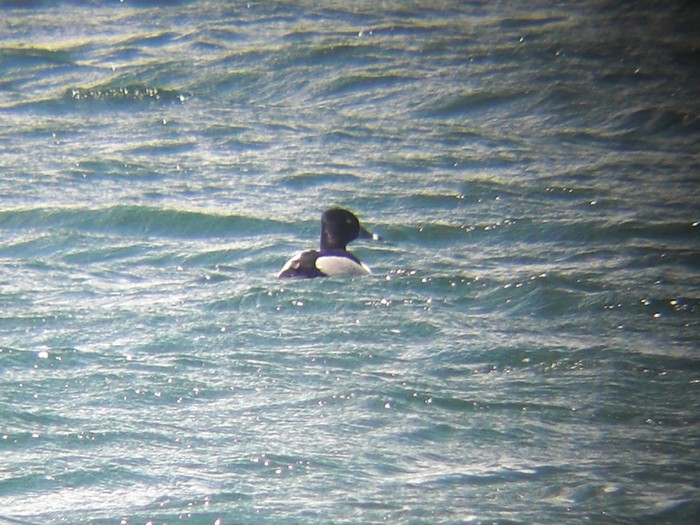
On Shetland, both the drake American Wigeon and the drake Green-winged Teal were still on Loch of Hillwell to 23rd while the adult drake King Eider on the Ythan Estuary (Aberdeenshire) and the drake Surf Scoteroff Musselburgh (Lothian) were the only other ducks of note this week.
Arguably, for fans of all things rare and wader-y, the quintessential late spring target speices to dream of chancing upon is Terek Sandpiper and this week saw the first (perhaps only) one of the year arrive on the coast of East Sussex, at Rye Harbour NR.
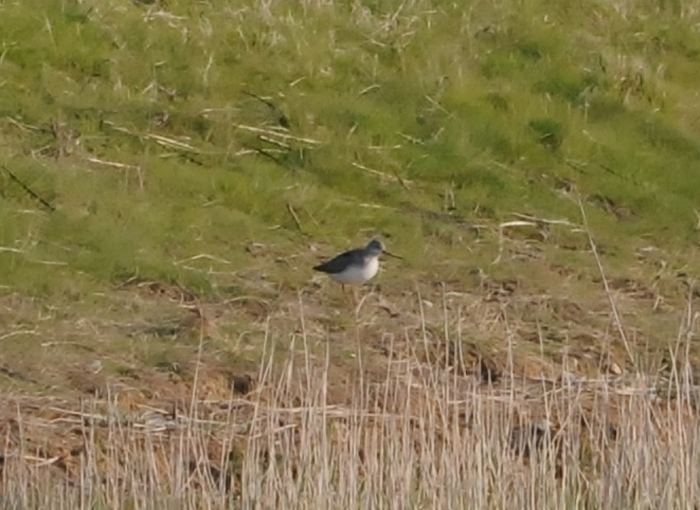
With 84 records of this superb shorebird on the record books, May has popped in 24, including the first-ever British record, also in East Sussex, at The Midrips, on May 30th 1951. June outscores May, with 28 accepted records and a further dozen have been seen in assorted Julys.
East Sussex has now recorded three Tereks ~ the two mentioned above and a second for Rye, found on May 31st 2008, while there have been two in neighbouring West Sussex, at Pagham Harbour in May 1969 and a brief visitor last year on the Adur Estuary on July 24th.
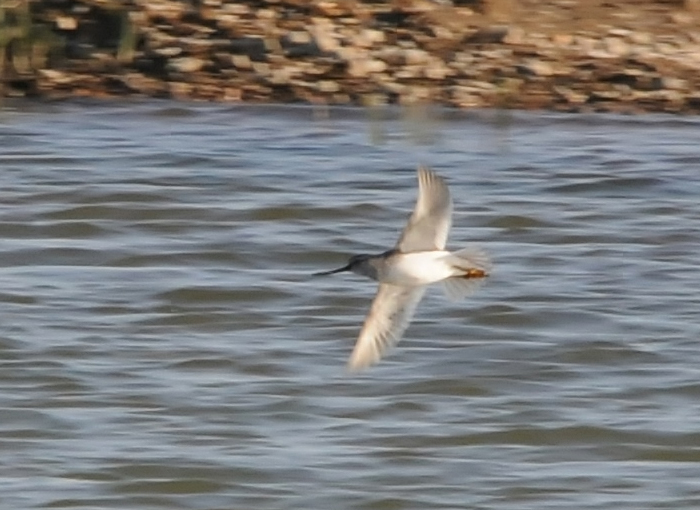
Thanks to two wintering birds, on the Plym Estuary (Devon) from November 1973 to May 1974 and at various locations around Northumberland between January and May , Terek Sandpiper has been recorded in every month of the year, but with an average of just over one-a-year since the very first one over 60 years ago, it remains a highly-prized find and a cracking-looking bird to boot.
Another spring favourite is Spotted Sandpiper and a one-day bird at Belvide Reservoir (Staffordshire) on 26th seemed to be pretty spotty indeed! Summer birds through the middle of the country are almost expected at some point each May or June and this is the third record for the site (the first two were in May 1982 and May 2005) with the county’s only other record, a juvenile, spent just under a month at Tittesworth Reservoir in November and December 2008.
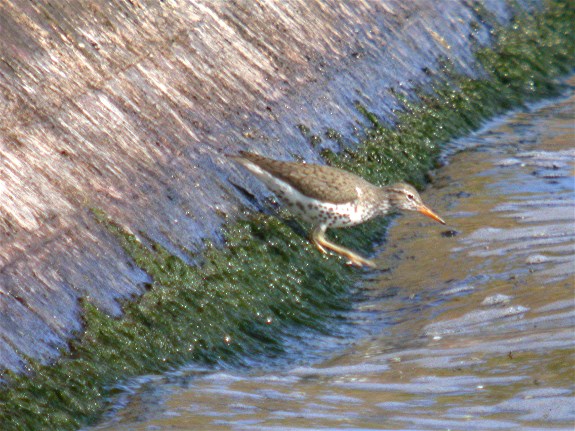
Three single Buff-breasted Sandpipers appeared this week (following on from the bird in Mayo last week). The first spent a couple of days at Loch Gruinart RSPB, Islay (Argyll & Bute) ~ from 22nd-23rd ~ and was followed by one on Mainland Shetland, at the Pool of Virkie, on 24th and at Tacumshin (Co. Wexford) on 25th.
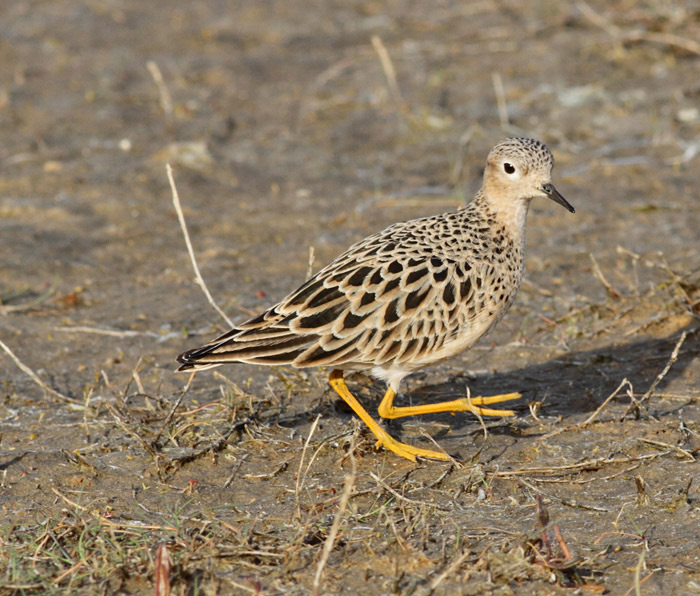
Last week’s Pectoral Sandpipers on the Ouse Washes RSPB (Cambridgeshire) and at Cley NWT (Norfolk) were both around again this week, the former seen on 22nd, the latter back again on 24th. Up to eight new birds arrived too, including three for Shetland (two on Foula on 25th-28th and one on Mainland, at Loch of Hillwell, on 27th), one on Orkney (on North Ronaldsay on 27th) and one on Donegal’s Tory Island on 26th. Other mainland records came from Burton Mere RSPB (Cheshire) on 24th, Swine Moor (East Yorkshire) on 25th and Berry Fen (Cambridgeshire) on 27th.
Meanwhile, all you wader buffs can ponder on this striking bird…..
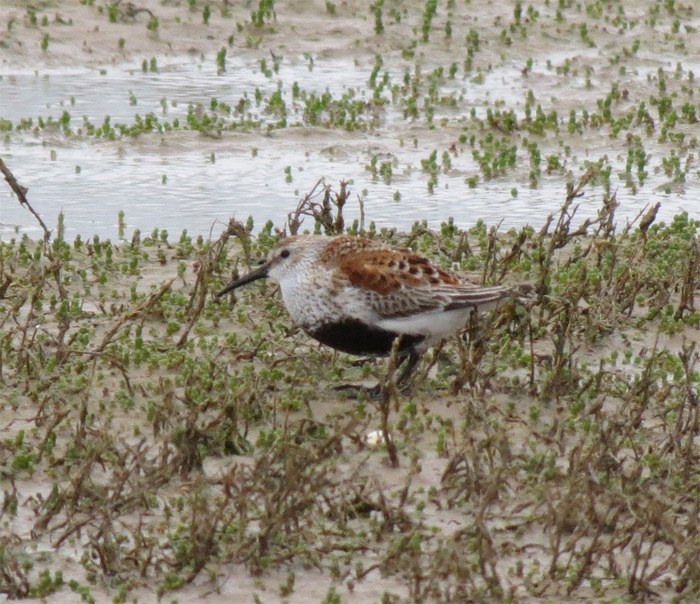
Bearing more than just a hint of similarity with the “Red-backed Sandpiper” seen at Cley in May 2011 (it could almost be one and the same), this gorgeous looking Dunlin was photographed on the beach near the East Hills, Norfolk on May 24th by Stuart White. The ghostly palour of the barely marked face and breast, long bill and striking rich terracotta, largely unmarked scapulars make for a particularly eye-catching individual, but where has it come from?
The East Hills bird appears to be a match for a Pacific form, perhaps the closest fit could be sakhalina, although there’s a chance that it could just be an ultra-bright alpina or perhaps centralis.
As it stands, the Cley bird from a couple of years ago is now not thought not to be an American Dunlin but more likely to be in the sakhalina ballpark as well (or an adjacent northwest Pacific form). The taxonomy of Dunlin is somewhat murky at the moment, so there aren’t too many places to go with any of it currently, but that shouldn’t detract from this super looking bird.
The lingering Red-necked Phalarope was at Coombe Hill Meadows (Gloucestershire) on 22nd-23rd and again from 25th-28th. Two birds were in Broadford Bay, on the Isle of Skye, on 23rd with singles at Old Moor RSPB (South Yorkshire) from 24th, at Loch of Spiggie (Shetland) on 25th and at Loch na Muilne RSPB on Lewis (Outer Hebrides) on 26th.
The sole representative for Dotterel was a male at Great Ormes Head (Conwy) from 25th-27th while Temminck’s Stints rustled up 15 birds, including three at Rye Harbour NR (East Sussex) on 26th and up to five along the Norfolk coast (with two at Titchwell, one at Burnham Norton and at least singles through the week for Cley). On the east coast, birds north of Norfolk were found in Lincolnshire, East Yorkshire and Northumberland, while birds at Dawlish Warren NNR (Devon) on 22nd, Burton Mere RSPB (Cheshire) on 24th, inland at Grimley (Worcestershire) on 25th and Conder Green (Lancashire) on 27th were all of particular note.
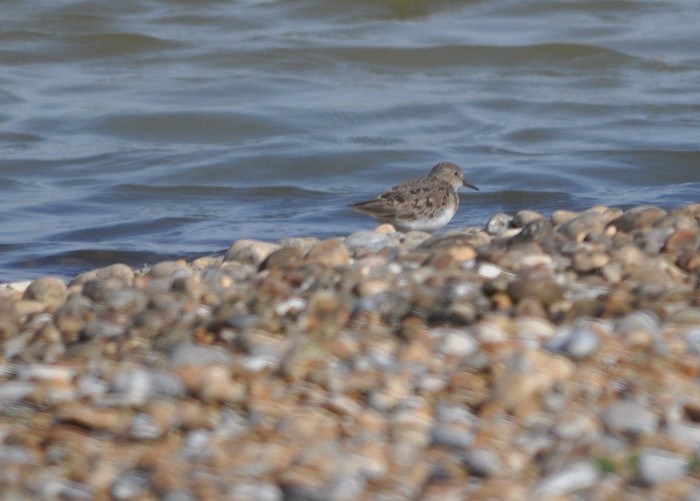
A first-summer Bonaparte’s Gull at Oare Marshes NR (Kent) on 22nd was a cracking find ~ a reserve first and only the fourth-ever for the county as a whole.
Kent’s first was an adult for a day at Dungeness in April 1989, the second was another first-summer that spent a month at various sites in the county from May 25th 1998, with the only other record (and the most recent to date) coming, once again, from Dungeness, a one day adult there in June 2001.
This week’s bird was seen at Oare Marshes until 26th and was then seen at nearby Swalecliffe early on the morning of 27th.
Shetland’s two first-summer Ring-billed Gulls remained at East Voe of Scalloway and Loch of Hillwell to 23rd, the latter still around a couple of days later. The only other record this week was of another first-summer, this one at Black Rock Strand (Co. Kerry) on 24th.
At least 11 Iceland Gulls were seen this week, with three for the Outer Hebrides, two or three for Shetland, two for Orkney and two in Ireland, while eight Glaucous Gulls included three for Donegal (two of them on Tory Island on 25th) and two or three for the Outer Hebrides.
That hot-bed of allsorts of Irish rares ~ Tacumshin ~ picked up the returning Forster’s Tern again in the past few days, seen again from 21st and still present on 25th. Nearby at Lady’s Island Lake, a summer White-winged Black Tern arrived on 23rd and remained to 26th, the first for the site since a juvenile there in 2005 (one was also reported there in 2006). Tacumshin has scored birds in 2009 and 2011).
In Suffolk, at Lakenheath Fen RSPB, the adult male Red-footed Falcon performed to the Bank Holiday throng, seen to 27th and after showing no signs of departing, promptly went walkies on the afternoon of the last date after a morning showdown with a local Accipiter. But he was back the next morning and the Suffolk sojourn looks set to get longer. A female Red-footed Falcon was reported from Holmethorpe Sand Pits (Surrey) on 25th.
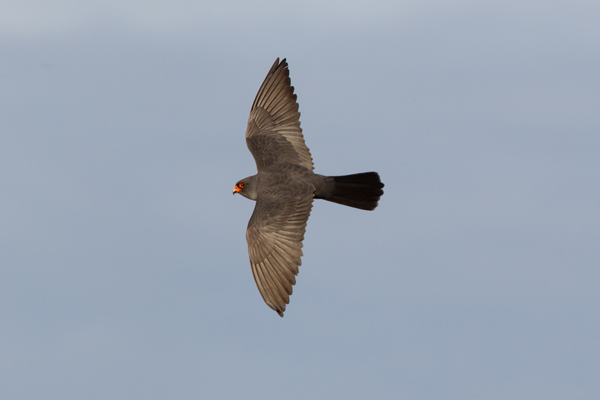
There was just one Black Kite reported this week, seen at Low Hauxley NR (Northumberland) on 27th ~ could it perhaps be the bird seen in the county a couple of weeks ago?
The adult male Snowy Owl remained on North Uist, between Greinetobht and Solas to 25th at least, while of the seven non-breeding Montagu’s Harriers reported, the female at Cahore Marsh (Co. Wexford) was perhaps the most noteworthy, present from 22nd-25th. Thirteen Honey Buzzards included three migrants in Kent on 22nd-23rd, while three were seen in Norfolk, including one again at Swanton Novers Raptor Watchpoint on 27th.
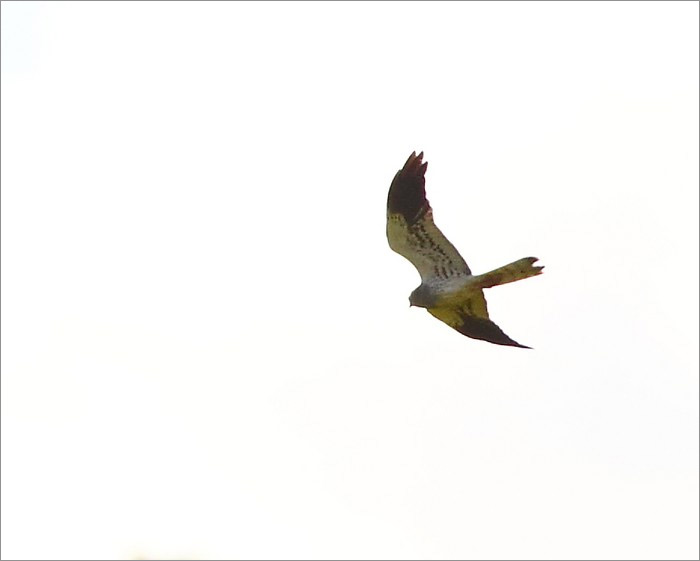
The rise and rise of Blyth’s Reed Warbler is something that many, many readers of this round-up will be all too familiar with ~ it is an annual, though still fairly uncommon species here now and most keen listers have seen at least one in the last decade or so…
….however, swing back to the murky Bank Holiday Monday on May 28th 1984 ~ a bird-infested Spurn Point was full of folk enjoying a heap of great birds (Thrush Nightingale, Savi’s Warbler, Bluethroat, Dotterel and Long-eared Owl to name five…) when, during the middle of the morning, all hell broke loose and carloads of hirsute young chaps bundled themselves into any passing vehicle and hurtled to the Observatory.
At first, word had it that there was an Olivaceous Warbler in-the-hand and in-the-Obs. Second, third and fourth-hand rumours swept through every bunch of twitchers onsite and being a year after the ~ sssssh ~ Tengmalm’s Owl, a sizeable guard was placed at the back door to ensure no underhand funny business from those inside….
….and then, out of the door came warden Barry Spence. In the bag, a Blyth’s Reed Warbler…an absolute mega at the time and Britain’s first-ever spring bird. The Spurn ’84 individual was only the 11th-ever seen here and (more importantly), the first multi-observed BRW ever (nine of the previous ones were noted between 1912 and 1928, with the other being a bird on Orkney in October 1979).
Winging our way back up to date, the Bank Holiday Monday of 2013 has produced another May Blyth’s Reed Warbler on Fair Isle on 27th and still present (and trapped and ringed) the following day. There have been seven accepted birds in total for the month since the Spurn bird (two of those on Fair Isle from a total of four on Shetland), with a further 19 birds recorded in June (to the end of 2011, with eight for Shetland, seven of those for Fair Isle).
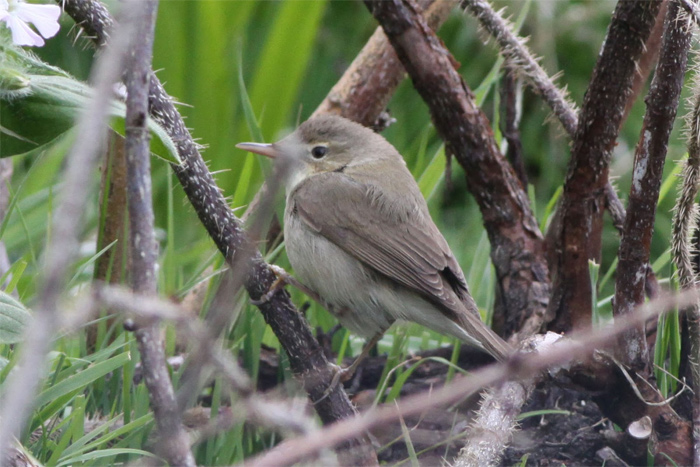
This still-testing Acro., is a much-more understood species now and with almost 140 records to the end of 2011, a lot has happened in the 29 years between the two Bank Holiday Monday birds.
On Orkney, the singing male Paddyfield Warbler remained on North Ronaldsay to 24th while a singing male Savi’s Warbler at Lakenheath Fen RSPB from 25th-28th proved particularly popular. Last week’s bird at Minsmere RSPB was also still around at the start of the new review period, heard on 23rd. Another excellent find was the singing male Greenish Warbler at Scarborough (North Yorkshire) on the morning of 28th.
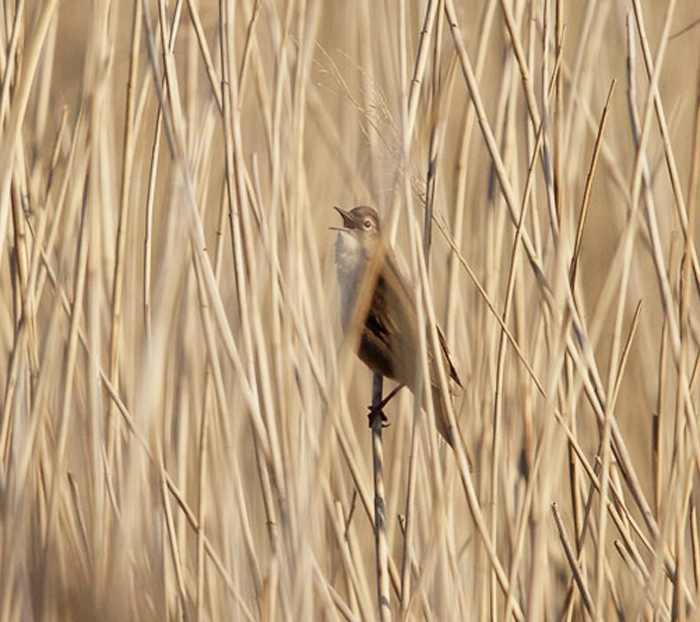
Further new arrivals on 28th were, arguably, the pick of the passerines this week. A Black-headed Wagtail was found at Filey (North Yorkshire) ~ and was a potential first for the whole of Yorkshire ~ while on Foula, a male Rustic Bunting appeared amongst a tidy fall on the island. Shetland also bagged a Little Bunting, found at Skaw, Unst, along with a Marsh Warblers and a couple of Red-backed Shrikes.

.jpg)
The first Balearic Woodchat Shrike (form badius) for Orkney was found on Westray on 26th and was the first to be seen here since one on Scilly in May 2011. There’s no sign of a split anytime soon, but that’s not to say that it won’t happen…but it could be a very, very long wait. New Woodchat Shrikes were found at Kenfig Pool NR (Glamorgan) and Southbourne (Dorset) on 22nd, on Ramsey Island (Pembrokeshire) on 26th and at Uskmouth NR, Newport Wetlands, (Gwent) and Foula (Shetland) on 28th. Only the Kenfig bird stayed for more than a day, still present on 25th.
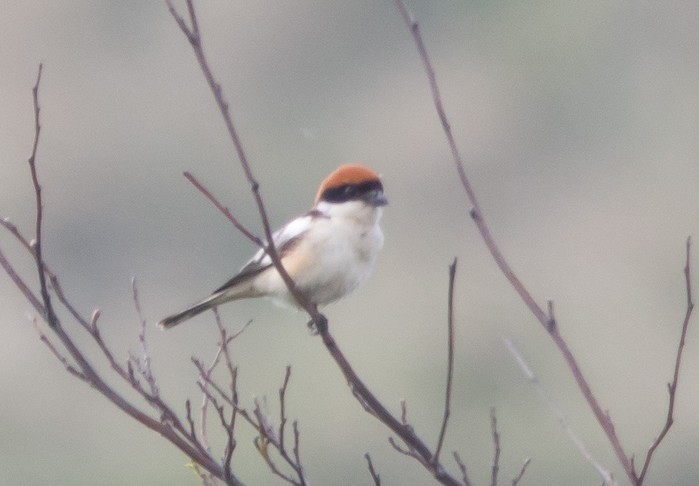
Back on North Ronaldsay, a Tawny Pipit arrived for a day on 25th while over on the Outer Hebrides, birders enjoying the passage of Long-tailed Skuas at Aird an Runair, on the Balranald RSPB also had the added bonus of a brief female Citrine Wagtail, only the eighth for the islands as a whole, and the first-ever spring record.
On Scilly, a Red-breasted Flycatcher was trapped and ringed at Porth Hellick, St. Mary’s on 26th and on 28th, singles were found at the Old Fall plantation, on Flamborough Head (East Yorkshire), the Isle of May (Fife) and on Shetland at Scatness. Six of the week’s ten Icterine Warblers were seen on Shetland ~ one on Fair Isle and two on Mainland on 24th with one each for Mainland and Foula on 25th (with another there on 28th) while in Highland, a singing male was at Melvaig on 26th-27th and another male was found in Cleveland, at Saltburn, on 28th, when further singles were seen at Spurn and Scarborough as well.


Three Red-spotted Bluethroats were seen on Fair Isle on 26th (after one the previous day) and a female was seen on North Ronaldsay on 25th. Another made it to Fair Isle on 28th. Eight of the week’s ten or so Marsh Warblers were confined to Scottish islands too ~ the first was seen on North Ronaldsay on 22nd, the second appeared over on South Uist on 24th with one and then two on Fair Isle on 25th, with three on the island on 26th, with two on 28th. Also on 28th, the neat threesome of warblers at Scarborough was completed by the afternoon arrival of a Marsh Warbler.

There were still excellent numbers of Red-backed Shrikes on offer this week ~ up to 80 were seen, and around half of those were on Shetland, as many as 40 were reported there over the course of the week, with seven birds (four males) on Fair Isle on 25th (with another 10 around the rest of Shetland on the same day), with a further six on Fair Isle and three on Foula on 28th. Four birds were on North Ronaldsay on 25th and bolstered the overall total for Scotland to around 50 birds or more.
Around the Spurn peninsula on 25th, at least 10 Red-backed Shrikes were found while elsewhere down the east coast there were four birds in Northumberland, two in County Durham, one in North Yorkshire, three in Lincolnshire, three in Norfolk and two in Suffolk. A female was trapped and ringed at Portland Bill (Dorset) on 22nd and a couple of notable inland records came from the London Wetland Centre WWT at Barnes in west London (a male there on 25th-26th) and a female appeared at Pewley Down (Surrey) on 26th.

The favourable weather for all points north of the Lincolnshire side of The Wash produced a decent scattering of Common Rosefinches this week, ten birds noted in all, with three for Spurn and two for Gibraltar Point on 25th. The day before, one made landfall on North Ronaldsay and another was found at Slaley (Northumberland) while the day after (26th), a male arrived at Weybourne (Norfolk) with another for Lincolnshire on 27th, when a female or first-summer male was found at Saltfleet and on 28th, up to five more were found ~ three were seen on Shetland, at Sumburgh Head, Exnaboe and on Papa Stour, one was seen at Burray (Orkney) and the fifth was in Aberdeen. The only Rosefinch to make it across the country was the male, trapped and ringed, on Calf of Man on 26th.
In contrast to some of the other “regular” May fall species, there were only two or three single Wrynecks found this week ~ at Spurn on 23rd and on Shetland, on Foula on 25th and 28th.
Staying on Shetland, a female Eastern Subalpine Warbler was trapped and ringed on Fair Isle on 25th and a second Shetland bird, another female, was found at Scatness, Mainland on 28th. In Ireland, on Copeland Island, off the coast of County Down, a first-summer Subalpine Warbler was an excellent record on 26th (the first county record was a male trapped there on May 28th 1967).
The only Bee-eaters this week were divided between Kent and Norfolk ~ singles were seen at Dungeness on 23rd and 24th (most likely different birds) with others near Folkestone on 24th and on the Isle of Grain on 25th. Norfolk’s contribution was one heading north over Winterton on 22nd and another for five minutes over Salthouse village on 26th.
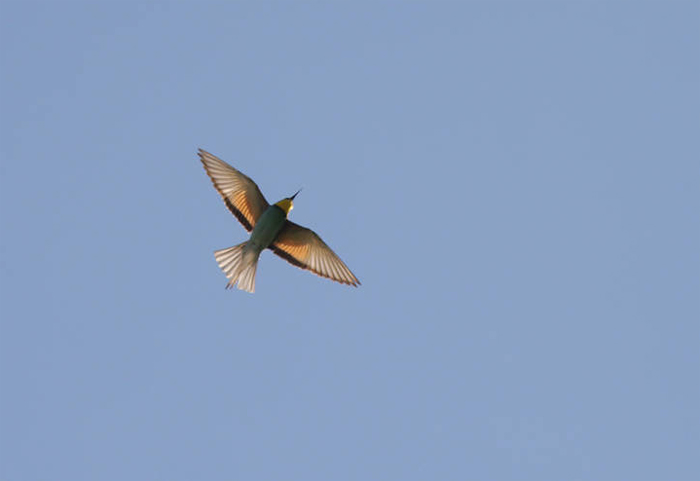
Dungeness also popped in a Red-rumped Swallow early on in this week’s proceedings, seen through the day on 24th. Further singles on the same date were found at Weir Wood Reservoir (East Sussex) and Beddington SF (London) with the first and last of these three still present on 25th. Another (?) was seen some seven miles or so from Dungeness, at Walland Marsh, also on 25th. Two birds were also reported from North Yorkshire, at Burnsall, on 26th. In East Yorkshire, at Spurn, the week’s only Alpine Swift flew south over the seawatching hut on 24th.
Hoopoe records this week were spread far and wide, and there were only three of them! One spent a couple of days at Melvich (Highland) on 23rd-24th, one was at Solva (Pembrokeshire) on 25th and on 27th, another was seen at Whitwell Quarry (Derbyshire). Away from the handful (up to three) Golden Orioles at Lakenheath, migrants were found at Seaford (East Sussex) on 22nd and 28th, on Bardsey Island (Gwynedd) on 23rd, Rame Head (Cornwall) and Minsmere RSPB (Suffolk) on 25th and on St. Mary’s (Scilly) on 28th. The week’s only Serin was still at Dungeness on 22nd.
Shetland and Orkney have dominated (as usual) many of the quality passerines found this week and the two island groups grabbed a Short-toed Lark each, one was at Sumburgh Head from 25th-28th and another was on North Ronaldsay on 26th. Bird three of the week was found at Dawlish Warren NNR (Devon), present on 25th.
Finally, the final Waxwing seems to have left the building, the only one noted this week was seen in a garden at Hunstanton (Norfolk) on the evening of 28th. Let’s hope they checked the colour of the undertail coverts…!
Another week done and dusted then, and we are now in to the ultra-mega zone, the Continental Giga rare time….so many quality birds have appeared in the last day or two of May and the first few days of June and most people may have half an eye on the sat-nav settings for Hartlepool at the moment ~ May 29th last year saw the words Western Orphean Warbler loom large on the pager, while the previous year, on June 6th, it was, of course White-throated Robin that saw many of us hit the highway. Can they make it three-in-a row? And if so, what’s your mega of choice?
Mark Golley
29 May 2013












